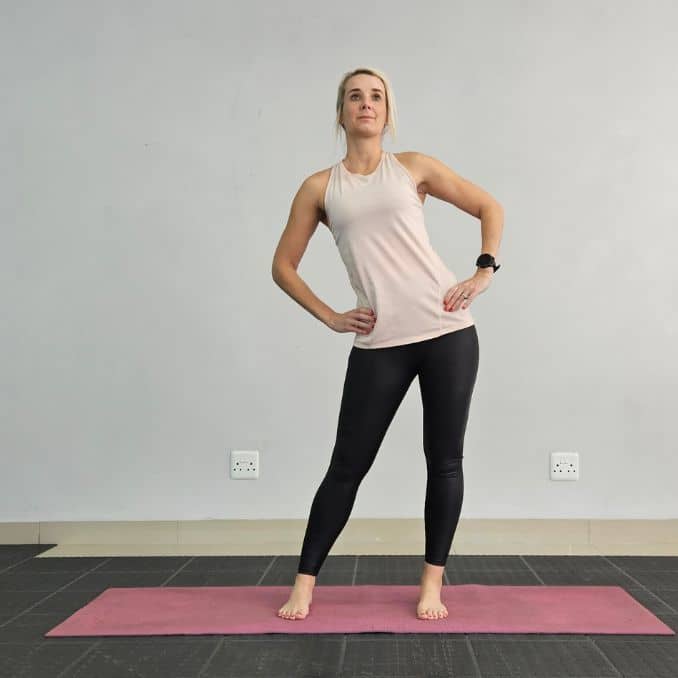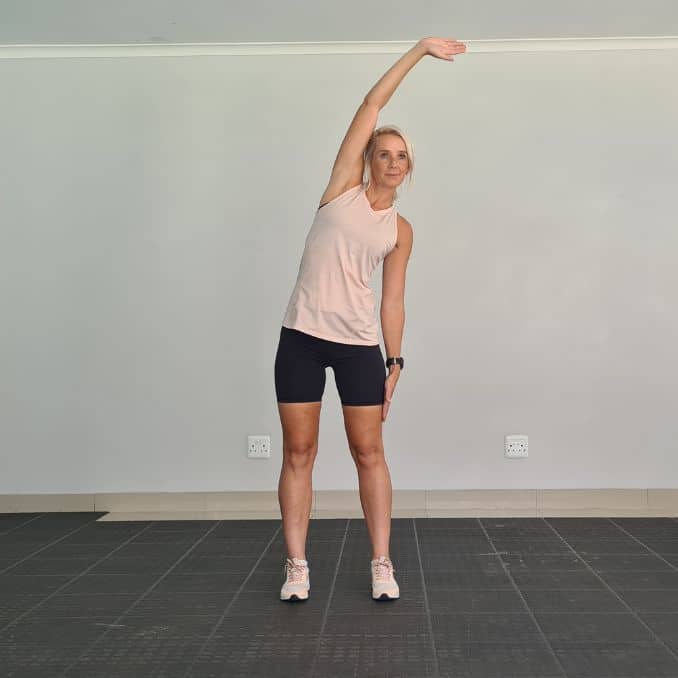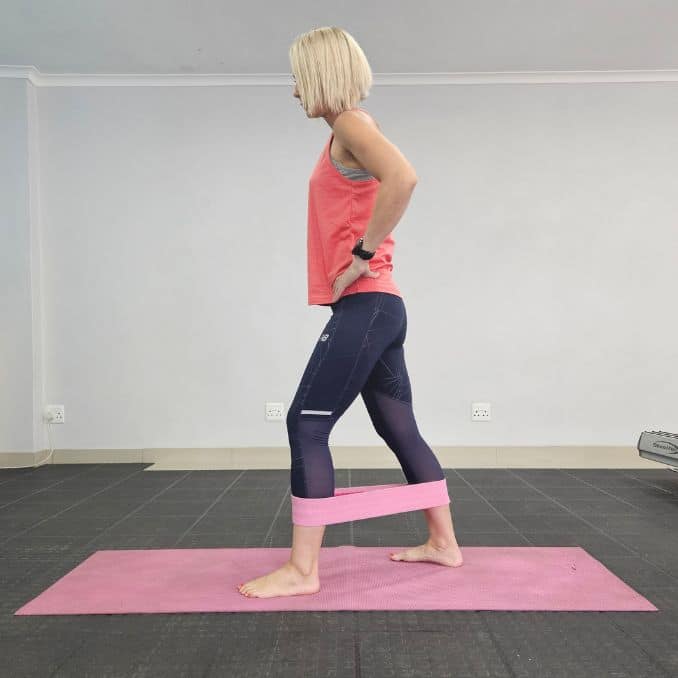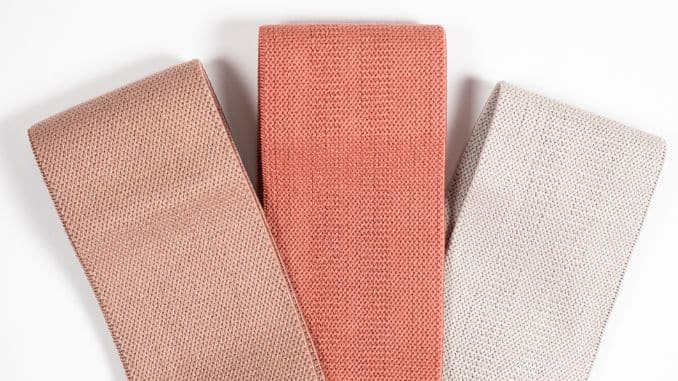Fabric resistance bands are powerful tools that mimic the resistance offered by expensive gym equipment, allowing individuals to maintain their fitness routines without needing costly gear. These versatile and compact bands can effectively target various muscle groups, from squats to various other exercises. Their portability makes them ideal for travelers, as they easily fit into a suitcase or backpack. Whether in a hotel room or a park, fabric resistance bands provide a convenient way to stay active and strengthen muscles. With these affordable and compact companions, fitness enthusiasts can enjoy a consistent workout experience wherever they go.
What are Fabric Resistance Bands?
Fabric resistance bands are versatile fitness tools made of durable fabric with elastic properties, designed to enhance strength and flexibility. These bands offer a comfortable and non-slip grip, making them ideal for various exercises.
- Light Band: Suited for beginners or those focusing on rehabilitation exercises. It provides gentle resistance for toning and light muscle activation.
- Medium Band: Intermediate users benefit from moderate or medium resistance, making it suitable for enhancing strength and building muscle endurance.
- Heavy Band: Geared towards advanced users seeking higher resistance levels for intense workouts, muscle building, and challenging strength training routines.
The Versatility of Fabric Resistance Bands

Using the fabric resistance bands in various settings and scenarios of workouts can be a versatile fitness tool. You can use fabric resistance bands:
1. At Home
Fabric resistance bands are ideal for home workouts due to their minimal space requirements. Incorporating them into your daily exercise routine is effortless, allowing you to utilize them for exercises like squats, lunges, and glute bridges to intensify your at-home fitness regimen.
2. In the Gym
Many gyms provide fabric resistance bands, allowing you to diversify your workout routine. You can use them to add variety and challenge to your gym workouts, whether focusing on strength training, stretching, or mobility exercises.
3. During Outdoor Workouts
Enjoy the great outdoors while enhancing your workouts with fabric bands. Take them to a nearby park or open space to incorporate resistance into bodyweight exercises like standing leg lifts, lateral leg raises, and resistance band-assisted sprints.
4. While Traveling
Fabric resistance bands like booty bands or mini bands are incredibly portable and take up minimal space in your luggage, making them a valuable companion for travelers. Whether in a hotel room or exploring a new destination, these bands allow you to maintain your fitness routine by performing a wide range of exercises on the go, such as seated rows, chest presses, and core work.
5. Rehabilitation and Physical Therapy
Fabric resistance bands are commonly employed in rehabilitation and physical therapy to support patients in their recovery journey. These bands offer a controlled and gentle way to rebuild strength, improve mobility, and enhance flexibility after injuries or surgeries. They can be tailored to individual needs, making them an invaluable tool for patients working to regain their physical well-being.
6. Group Fitness Classes
In group fitness classes like Pilates and yoga, fabric resistance bands are crucial in intensifying exercises and helping participants achieve better results. These bands provide variable resistance, allowing participants to challenge their muscles while enhancing stability and control. They are an excellent addition to these classes, promoting improved posture, balance, and body strength.
7. Personal Training
When working with a personal trainer, fabric resistance bands can be incorporated into customized workouts to target specific muscle groups and provide resistance tailored to your fitness goals. Personal trainers use these bands to add variety and progression to workouts, helping clients achieve their desired outcomes, whether building muscle, improving flexibility or increasing overall strength. This tailored method enhances the efficiency of training sessions.
Fabric Mini Band Exercise Routine
1. Hip Circles
Begin in an upright standing position with your feet shoulder-width apart, maintaining good alignment with your head, shoulders, hips, and legs. Place your hands on the hips. Engage your core and move your hips in a circular motion. Repeat the movement in the opposite direction.
 |  |  |
Hip Circles
2. Overhead Reach
Begin in an upright standing position with your feet hip-width apart, maintaining good alignment with your head, shoulders, and hips. Place your hands at your sides. Engage your core and bend your upper body to the side, reaching over your head with your opposite arm. Return to the starting position and repeat the movement on the opposite side. Start with 10 repetitions on each side.
 |  |
Overhead Reach
3. Cross Body Reach
Begin in an upright standing position with your feet shoulder-width apart, maintaining good alignment with your head, shoulders, and hips. Engage your core. Rotate your upper body to one side as you reach across your body with one arm at chest height, keeping your hips forward. Return to the starting position and repeat the movement on the opposite side. Start with 1 set of 10 repetitions on each side.
 |  |
Cross Body Reach
4. Lateral leg lifts
Begin in an upright standing position with your feet together, maintaining good alignment with your head, shoulders, hips, and legs. Place your hands on your hips and engage your core. Lift one leg out to the side, ideally to a 30 to 45-degree angle. Keep your toes pointing forward. Lower your leg to the starting position and repeat the movement on the opposite side. Start with 1 set of 10 repetitions on each leg.
 |  |
Lateral Leg Lifts
5. Squats
Begin in an upright standing position with your feet shoulder-width apart, maintaining good alignment with your head, shoulders, hips, and legs. Place your hands on your hips. Engage your core, bend your knees, and hinge through your hips to move into a squat position. Raise back to an upright standing position, squeezing your glutes at the top. Repeat the movement and complete for 10 repetitions.
 |  |
Squats
6. Monster Walks
Begin in an upright standing position with your feet shoulder-width apart, maintaining good alignment with your head, shoulders, hips, and legs. Wrap the mini band around your shin area. Slightly bend your knees and hinge through your hips to move into an athletic position. Engage your core. Step forward with one foot and follow with your other foot, maintaining a wide stance and band tension. Repeat the movement.
 |  |
Monster Walks
7. Side Steps with Band
Begin in an upright standing position with your feet hip-width apart, maintaining good alignment with your head, shoulders, hips, and legs. Wrap the mini band around your legs, just above your ankles, and bring your hands in front of your body to chest height. Bend your knees and hinge through your hips to move into an athletic position, engaging your core. Take a big step to the side with one foot, following with your other foot. Repeat the movement, alternating directions.
 |  |
Side Steps with Band
8. Banded Squats
Begin in an upright standing position with your feet shoulder-width apart, maintaining a proper alignment with your head, shoulders, hips, and legs. Wrap the fabric band around your legs just above your knees and bring your hands in front of your body at chest height. Contract your core, bend your knees, and hinge through your hips to move into a squat position, ideally bringing your knees to a 90-degree angle. Raise back up to return to the starting position and repeat the movement.
 |  |
Banded Squats
9. Hip Abduction
Begin in an upright sitting position on a chair with your knees bent and feet flat on the floor. Maintain a proper alignment with your head, shoulders, and hips. Wrap the fabric resistance band around your legs, just above your knees. Place your hands at your sides on the chair for support. Engage your core and bring your knees out to the sides as far as comfortably possible while maintaining control. Return to the starting position and repeat the movement. Start with 1 set of 10-15 repetitions.
 |  |
Seated Leg Abduction
10. Seated Figure 4
Begin in an upright sitting position on a chair with your knees bent and feet flat on the floor, maintaining good alignment with your head, shoulders, and hips. Cross one ankle over your opposite knee. Engage your core and hinge through your hips to bend your upper body forward. Hold this position for several deep belly breaths, in through your nose and out through your mouth. Return to the starting position and repeat the movement on the opposite side.

Figure 4
Safety Tips and Precautions When Using Fabric Resistance Bands

While fabric resistance bands are fantastic fitness tools, they must be used safely to prevent injuries and maximize their benefits. Follow these safety tips and precautions to ensure a safe and effective workout experience:
1. Inspect Your Bands Regularly
-
- Before each workout, inspect your fabric resistance bands for any indications of wear, tear, or any form of damage.
- Please pay particular attention to the reinforced stitching, ensuring it remains intact to maintain the band’s structural integrity.
2. Choose the Right Resistance Level
-
- Fabric resistance bands often come in sets with different resistance levels. Start with a light resistance band, especially if you are a beginner.
- Gradually progress to higher resistance levels as your strength improves, avoiding unnecessary muscle strain.
3. Follow Proper Form
-
- Maintain proper form during exercises to target the intended muscle groups and reduce the risk of injury.
- Ensure the bands are securely positioned to prevent unexpected snaps or slips during movements like pull-ups, push-ups, or squats.
4. Use Bands for Intended Exercises
-
- While fabric resistance bands are versatile, use them for exercises they are designed for and avoid modifying them for activities that may exceed their intended use.
- Be cautious with exercises involving anchoring the bands, ensuring the anchor point is stable and secure.
5. Be Mindful of Your Surroundings
-
- Create a safe workout space free from obstacles that can interfere with your exercises using fabric resistance bands.
- Ensure ample space around you, especially when performing dynamic movements.
6. Secure Bands Properly
-
- When using loop bands, ensure they are securely positioned around your thighs or ankles to prevent snapping or rolling during exercises.
- For pull-ups or other exercises involving anchoring the bands, confirm that the bands are securely attached to stable support.
7. Avoid Overstretching
-
- Fabric resistance bands have a maximum stretch capacity. Avoid overstretching them beyond their limits, which may compromise their durability and safety.
- Follow the manufacturer’s guidelines for stretching limits and replacement recommendations.
8. Store Bands Safely
-
- After your workout, store your fabric resistance bands in their designated storage bag to protect them from environmental factors that may contribute to wear and tear.
- Ensure the bands are neatly coiled and placed in the storage bag, preventing entanglement or damage.
9. Educate Yourself on Band Types

-
- Understand the differences between fabric resistance bands and other bands like loop bands. Each type may have specific use cases and precautions.
- If using multiple bands simultaneously, ensure they are the same size and resistance level for balanced workouts.
10. Warm-Up Before Use
-
- Prioritize a proper warm-up before engaging in exercises with fabric resistance bands. This aids in conditioning your muscles and reduces the risk of strains or injuries.
By adhering to these safety guidelines and measures, you can enjoy a workout that is both safe and efficient with fabric resistance bands, ensuring a great quality exercise experience every time.
Conclusion
In conclusion, fabric workout bands have emerged as a formidable asset in fitness, offering versatility, affordability, and portability that can enhance anyone’s workout routine. These unassuming yet highly effective tools can seamlessly integrate into various fitness settings, from the home gym to professional training facilities. By providing variable resistance, fabric bands cater to individuals at all fitness levels, enabling them to tailor their workouts to specific goals, whether building strength, improving flexibility, or enhancing stability.
What makes resistance bands remarkable is their adaptability to a wide array of exercises, allowing for a full-body workout that simultaneously engages multiple muscle groups. Moreover, their role in rehabilitation, group fitness classes, and personal training emphasizes their universal appeal. As fitness enthusiasts continue to explore the limitless possibilities with these bands, it becomes increasingly clear that they are an essential addition to any fitness arsenal, offering a path to maximize the effectiveness of workouts and achieve fitness goals more efficiently.
Elevate your fitness and start achieving your goals. Check out our ‘The Ultimate Workout Toolkit‘ today and revolutionize your workout routine!


